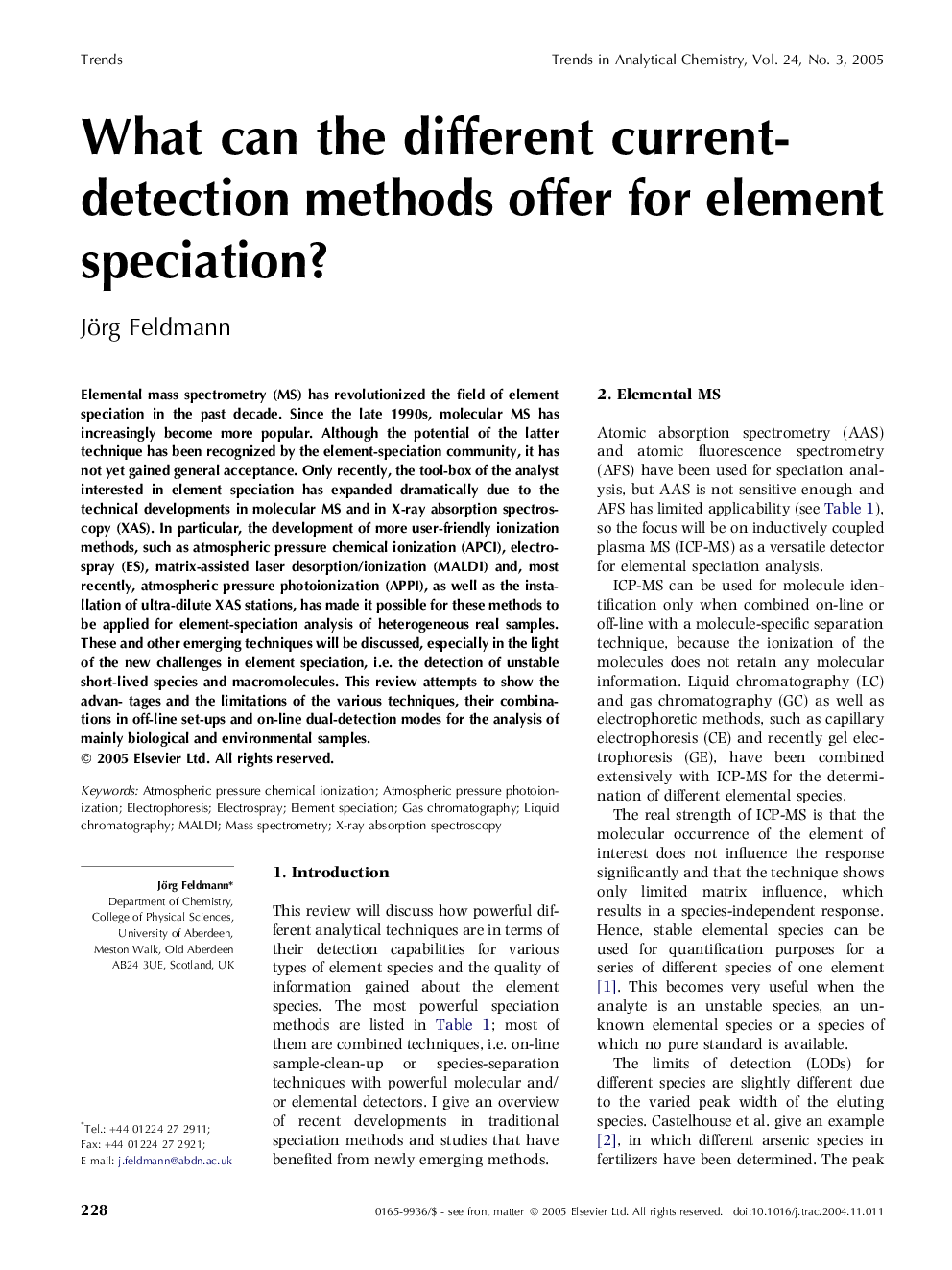| Article ID | Journal | Published Year | Pages | File Type |
|---|---|---|---|---|
| 10564287 | TrAC Trends in Analytical Chemistry | 2005 | 15 Pages |
Abstract
Elemental mass spectrometry (MS) has revolutionized the field of element speciation in the past decade. Since the late 1990s, molecular MS has increasingly become more popular. Although the potential of the latter technique has been recognized by the element-speciation community, it has not yet gained general acceptance. Only recently, the tool-box of the analyst interested in element speciation has expanded dramatically due to the technical developments in molecular MS and in X-ray absorption spectroscopy (XAS). In particular, the development of more user-friendly ionization methods, such as atmospheric pressure chemical ionization (APCI), electrospray (ES), matrix-assisted laser desorption/ionization (MALDI) and, most recently, atmospheric pressure photoionization (APPI), as well as the installation of ultra-dilute XAS stations, has made it possible for these methods to be applied for element-speciation analysis of heterogeneous real samples. These and other emerging techniques will be discussed, especially in the light of the new challenges in element speciation, i.e. the detection of unstable short-lived species and macromolecules. This review attempts to show the advantages and the limitations of the various techniques, their combinations in off-line set-ups and on-line dual-detection modes for the analysis of mainly biological and environmental samples.
Keywords
Related Topics
Physical Sciences and Engineering
Chemistry
Analytical Chemistry
Authors
Jörg Feldmann,
